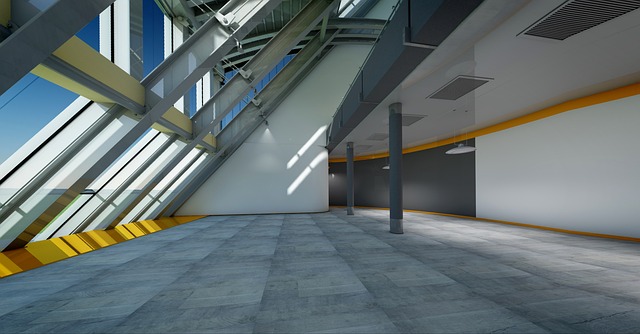Advanced structural 3D modeling drives precast and modular construction, offering streamlined processes, enhanced speed, reduced labor costs, and improved efficiency compared to traditional methods. This technology enables precise visualization, simulation, cost estimation, clash detection, and structural analysis, ensuring high-quality, safe, and timely project delivery with minimal site disruptions.
In today’s fast-paced construction industry, efficient and flexible methods are crucial. Precast and modular structure modeling offers a game-changing approach, revolutionizing traditional building practices. This article explores how structural 3D modeling, an innovative tool, enhances precast and modular construction. By understanding these techniques, we uncover significant advantages: design flexibility, reduced timeframes, and increased project efficiency. Discover how these methods are streamlining construction processes, from concept to completion.
Understanding Precast and Modular Construction
Precast and modular construction are innovative approaches that revolutionize the building industry by streamlining construction processes. This method involves creating sections of a structure off-site in a controlled environment, using advanced structural 3D modeling techniques to ensure precision and quality. These precast or modular components are then transported and assembled on-site, offering numerous advantages over traditional construction methods.
By utilizing precast and modular design, builders can achieve faster project completion times, reduced labor costs, and improved overall efficiency. The process allows for complex structural elements to be prefabricated, including walls, floors, and roof systems, which can then be seamlessly integrated into the final building design. This level of precision and planning contributes to better structural integrity, higher quality standards, and minimal site disruptions during construction.
Advantages of Structural 3D Modeling
Precast and modular construction methods have gained significant traction in the building industry due to their numerous advantages, with structural 3D modeling being a pivotal component. This advanced technique allows for precise visualization and simulation of complex structural designs before physical construction begins. By creating detailed digital twins of buildings or infrastructure, architects, engineers, and contractors can identify potential issues, optimize material usage, and enhance overall efficiency.
Structural 3D modeling streamlines the entire process, from design to execution. It enables better collaboration among project stakeholders as everyone works on a unified digital platform. This reduces errors, improves coordination, and accelerates decision-making. Moreover, it facilitates cost estimation, clash detection, and structural analysis, ensuring that projects stay within budget and schedule. The ability to model in 3D also aids in client presentations, providing a clearer understanding of the final product.
Design Flexibility and Efficiency
Precast and modular construction techniques, combined with advanced structural 3D modeling, offer unparalleled design flexibility and efficiency. By creating detailed digital representations of structures before physical construction begins, architects and engineers can optimize space planning, identify potential issues early on, and experiment with various design options. This process allows for more informed decision-making, reducing both time and cost overruns.
The integration of 3D modeling into the precast and modular workflow streamlines the entire construction process. It enables seamless coordination between different trades, ensures precise fabrication of components, and facilitates faster on-site assembly. This level of precision and efficiency contributes to reduced project timelines, minimal waste, and higher quality outcomes, making structural 3D modeling a game-changer in modern construction practices.
Streamlining Projects with Precast Components
In today’s fast-paced construction industry, streamlining projects is essential for meeting tight deadlines and staying within budget constraints. Precast and modular structure modeling offers a game-changing solution, revolutionizing how we approach building projects. By utilizing advanced structural 3D modeling techniques, architects and engineers can design and visualize complex structures with unparalleled precision. This technology enables the creation of precast components, which are then assembled on-site, significantly reducing construction time and labor costs.
The benefits of this method extend beyond efficiency; it also ensures consistency in quality and safety. Precast components, meticulously crafted in a controlled environment, arrive at the construction site ready for installation, minimizing errors and enhancing overall structural integrity. This streamlined approach not only expedites project delivery but also allows for more creative design possibilities, making it an increasingly popular choice for modern construction practices.
Precast and modular structure modeling offer a revolutionary approach to construction, streamlining projects while enhancing efficiency. By leveraging structural 3D modeling, architects and engineers gain unparalleled design flexibility, enabling complex structures to be conceptualized, refined, and realized with speed and precision. This innovative method is transforming the industry, making construction more accessible, cost-effective, and sustainable.
